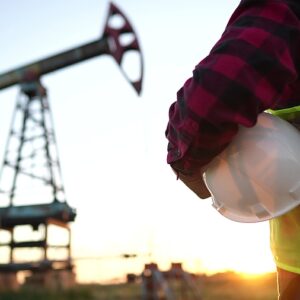Facing dropping oil production and a bloated budget, Alaska’s state government is considering a new 9.4 percent tax on oil and gas companies making over $4 million annually. However, energy analysts warn the tax hike would hurt the overall economy and undermine the already-struggling energy sector.
“Higher taxes on Alaska production are the last thing the state of Alaska should do as it competes for investment with other places around the world,” Institute for Energy Research Distinguished Fellow Dan Kish told DCJournal. “The Biden administration’s policies against federal production increases means federal lands and waters in Alaska are off limits. Making state production more expensive just makes it worse.”
“These taxes would strike at the very heart of the Alaskan economy,” added Dennis Hull, state affairs coordinator at Americans for Tax Reform. “If passed, this cash grab will push major industry players to scale back investment and pivot to other oil-rich states, like Texas and North Dakota, where it is warmer and far less costly to transport fuel.”
The Anchorage Democrat behind the proposed tax increase disagrees, arguing it is time for energy companies to pay more.
“The oil industry promised that we’d get more jobs, more revenue, more investment… more production,” state Sen. Bill Wielechowski (D-Anchorage) told DCJournal. He is the sponsor of SB 114, the bill imposing a 9.4 percent tax on oil and gas companies that make over $4 million per year. “Since that time, we’ve gotten about 50 percent of the investment that we had, jobs have plummeted by over 50 percent, state revenue has plummeted by 50-75 percent.”
Another part of the bill demands all types of corporations – including those classified as “S corporations” by the Internal Revenue Service (IRS) – pay the 9.4 percent tax. Current Alaska law exempts “S corporations” from income taxes.
Wielechowski wants to make sure Alaska’s government recovers that share of the tax pie. “This is simply an effort to claw back a little bit of the revenue that we’ve lost over the years.”
Kara Moriarty, president and CEO of the Alaska Oil and Gas Association, said that approach is wrong.
“America needs to be focused on energy independence and producing as much as we can at home. Raising taxes on the state’s largest economic driver will not produce more oil. This latest attempt to increase taxes by some policymakers in Juneau will hurt Alaskan families and businesses.”
Transporting Alaskan crude oil to the lower 48 states is not easy. The black gold is pumped through the Trans-Alaskan Pipeline System before being loaded onto tanker ships. The pipeline runs at only 20 percent capacity despite an estimated 40 to 50 billion barrels of oil in the North Slope, according to the Resource Development Council of Alaska. Its website blames “federal policy, environmental litigation, or a complex and ever-changing regulatory regime” for the lower oil output. Conservative and libertarian organizations have also criticized the Jones Act, the law requiring goods shipped between U.S. ports only be transported on American-owned, operated, and built ships, for reduced Alaskan output.
Production on federally owned land is stagnant. The Biden administration froze 11 leases on the Arctic National Wildlife Refuge in June 2021, just months after the Trump-run State Department announced the bids had been accepted. There had been 22 tracts of land up for auction.
“You had no oil companies bid for [those leases],” said Wielechowski. “That’s something our congressional delegation pushed for decades. That’s something that Alaska sort of thought would be this silver bullet for oil production…this big, huge event, and no one bid on it.”
Advocates for increased oil production blame politics, not a lack of demand.
“When they held the ANWAR leases, they were all crowing because they didn’t get many bidders, but that’s politics,” said Kish. He said the real story is oil companies not wanting to spend money and time on something that an incoming administration would cancel. “That has nothing to do with the potential that ANWAR has in terms of oil. It’s there.”
U.S. Department of Interior statistics show energy production royalties on federal lands in Alaska are not as high as they are in other states. The federal government sent $45 million dollars in royalties to Alaska in 2022. That was less than Texas and California, which received $77.3 million and $54.19 million, respectively. The leader was New Mexico, which made $2.74 billion.
The U.S. government owns 60.9 percent of Alaska’s land, according to Ballotpedia. It owns 45.5 percent of California, 31.7 percent of New Mexico, and 1.9 percent of Texas.
Economists say Alaska’s real budget problem is government spending.
“Amazingly, Alaska had the highest per capita state and local spending in 2020 at $17,374, followed by Wyoming ($15,641) and New York ($15,373),” according to Stephen Moore, senior fellow at the Heritage Foundation. “You have to be a real champion big spender to take on more per capita expenditures than even New York…The solution to Alaska’s fiscal woes is a constitutional spending cap. Put state government on a diet.”
Wielechowski put the chances of the bill succeeding at “50-50.” The legislative session begins in January 2024.


